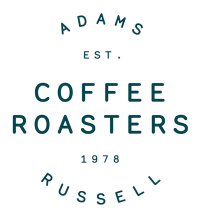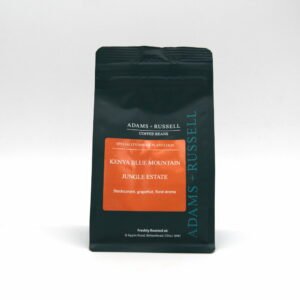Filter February – Buying Guide
- Updated on: March 7, 2024
- Written by: Aimee Bennett
Aimee is a coffee enthusiast and has worked in the coffee industry for years. She sources coffee beans from around the world and her coffee journey began in… (read more).
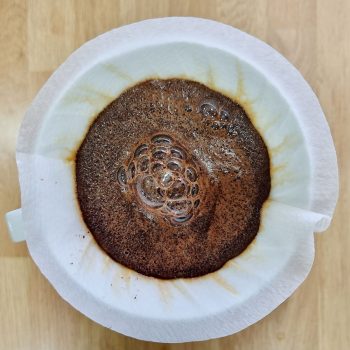
Before March 2020 many people were happy to go to the nearest coffee shop for their caffeine fix. Leaving it in the hands of an experienced barista was the preferred option, handing over a small amount of your hard earned cash for a hand crafted drink seemed like a good deal. As a barista myself I was asked “How can I do this at home?” just as often as I was asked to make a drink ‘extra hot, wet and half decaf’. Thankfully, the answer doesn’t have to be so complicated.
At the start of Covid, much like baking banana bread, most of you were keen to give filter coffee a go. Maybe it was to help you get through home-schooling, the WFH day or because you were basically forced to make your own coffee. Whatever the reason, there was a surge for home brewing.
We’re going to celebrate all things filter in this article, and unlike the Peloton, keep your Covid hobby alive. We’ll cover the most frequently asked questions and recommend some of our favourite products for you to try. Home brewing can seem like a bottomless pit of knowledge, however we’ll try and keep things simple.
How is Filter coffee different to espresso?
First off, ‘Espresso’ and ‘Filter’ what’s the difference? There are many, many different ways to brew coffee. From Espresso to pour over and everything in between. But coffee is just coffee, right? Well, not quite.
Espresso brewing is something that typically lasts between 20 – 30 seconds. It produces a concentrated, flavourful and powerful shot. It’s the foundation for your coffee shop favourite.
Filter brewing produces a typically milder and lighter beverage with a much higher volume, the process for which takes upwards of 3+ minutes. This extended brew time allows for more nuanced flavours to develop.
This is a very accessible way to transition to black coffee, you’ll be surprised by how drinkable it can be without milk and sugar. It’s also a fantastic way to develop your palate, as it cools you taste different levels of flavours. Yes, it really can taste of nutmeg, candyfloss and frangipane.
Before we begin: Handy filter brewing tips
Whether you’re using an electronic brewer such as the Wilfa Classic+ or other pour over equipment, there’s a few things to keep in mind to ensure good quality and consistent coffee.
- Don’t pre-grind your coffee. The fresher you grind it, the tastier it will be. Once ground, the flavours in the beans are released and gradually start to fade.
- Choose the right grind size. Different pieces of brewing equipment require different grind sizes. By choosing correctly you ensure that the water doesn’t pass too quickly or too slowly through the grounds and creates the optimum extraction.
- Use filtered water. This removes any residual tastes or odours that may taint the taste of your coffee. Filtered water leaves you with a clean, neutral taste. The perfect base for your filter coffee!
- Rinse your filter paper. Much like the tip about filtering your water, it removes the paper-y taste and any residual treatments the manufacturer may have applied. Again, it benefits the clarity and taste of your brew.
- Follow a recipe. The most important tip that we practically insist upon. There’s no point winging it, especially if you’re unsure. They can also be tweaked and used as a foundation for you to create something best suited to you.
Best Adams + Russell Coffee For Filter Machines
This is the single best method of extracting the nuanced and individual flavours from each coffee. It’s time to get creative with the coffees you buy. Our top 3 recommendations are:
Miaki Red
Perfect black or with milk
Rwanda Kinini
One we recommend black
Faros
Like the Miaki, can be served with or without milk
-
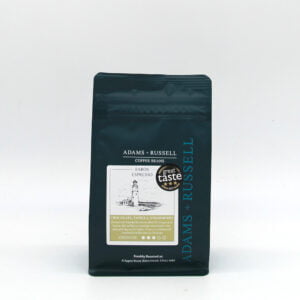 Faros Espresso£7.00 – £108.00
Faros Espresso£7.00 – £108.00 -
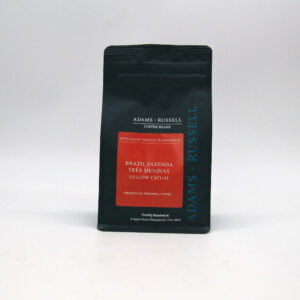 Brazil Fazenda Três Meninas Yellow Catuai£9.50 – £90.00
Brazil Fazenda Três Meninas Yellow Catuai£9.50 – £90.00 -
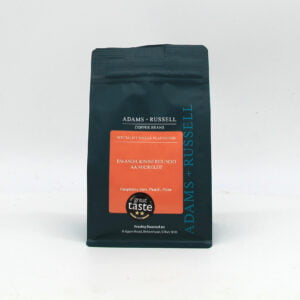 Rwanda Kinini Rulindo AA Microlot£9.50 – £29.00
Rwanda Kinini Rulindo AA Microlot£9.50 – £29.00
Our Favourites
Introducing Mike: Our roaster who has been with working at the roasters‘ for just over four years. To him it’s more than just coffee, it’s something worth getting excited about.
Favourite brew method: The V60
Why: You can change and play around with all the variables. The grind size and the amount of coffee stays the same, it’s all about the flow of water and where you pour it. It’s an interactive brewing method. You can’t just throw your water on, each coffee requires a change of technique.
Favourite coffee: Bolivia Union, Kenya Blue Mountain or Colombia Dora.
Tips for beginners: Start with something middle of the road, a coffee that’s easy to brew with- you can’t go wrong with a South American, they’re full bodied and sweet. When someone looks at a bag of coffee, they want to taste the coffee home and taste the flavours on the bag. You need to do a bit of research and think about what you want from it and how to brew it. It’s very difficult to achieve those flavour notes straight off the bat.
Recommended Accessories
Instead of going in blind or buying impulsively (something we’re all guilty of) consider the gap in your home setup, and consider what would improve it or make your life easier. Plus, the items on this list make fabulous gifts for either yourself or the coffee-lover in your life.
Scales
Barista weighing scales will help you stay within the ratio range for your preferred brew method. Weighing both the ground coffee and the water input helps you achieve consistency.
Hario Mill
The Hario Ceramic Mill Skerton/Grinder is an inexpensive solution and a great place to start if you’re still buying ground coffee. If you don’t mind the small arm workout you can use this day in day out.
Timer
Monitors extraction time and ensures accuracy. Stops under / over extraction. There’s apps available for your smartphone with recipes and other information.
Spare papers
Great to keep on hand, especially for the Aeropress if you’re on the go.
Spotlight product! Our new Filtropa papers are perfect for drippers such as the V60. They’re oxygen bleached (without any nasty chemicals) and chlorine free.
Wilfa
A grinder for those wishing to take the next step. It’s an electric grinder with high quality burrs that ensure a perfectly even grind.
Recommended reading
Coffeeland — Augustine Sedgewick. An amazingly accessible and deeply interesting history of coffee growing, and the social and economic power that comes with it.
The World Atlas of Coffee — James Hoffmann. Whether you’re in the industry, a home enthusiast or anything in between, this is definitely a book you should own.
How To Make Coffee: The Science Behind the Bean — Lani Kingston. In Mike’s words “The only book you need”
So, what’s the best filter coffee equipment? Drip vs Immersion
The ‘best’ filter coffee equipment is dependent on your needs, budget and desired outcome. We’re firm believers that you can brew great coffee at home on a low budget, without fancy equipment.
What are the differences between drip and immersion brewing?
Drip brewing involves the introduction of water in smaller doses, only adding more when the previous pour has dripped through the coffee. The benefits of this method are it produces a cleaner, refined taste and extracts coffee much more gently.
The immersion method is when the ground coffee is immersed in hot water and left to brew until it’s properly extracted. Instead of focusing on the pour, you look at the length of time the water and coffee interact. This generally achieves a fuller and bolder profile.
V60
Type: Drip
Grind: Medium
Time: 90 seconds – 3 minutes
Taste: Slightly milder and less acidic than a coffee brewed in a Cafetière, but stronger than one brewed in a Chemex. It requires a specific technique but it pays off.
CHEMEX
Type: Drip
Grind: Medium
Time: 3 – 5 minutes
Taste: Clean and pure. It makes a coffee that perhaps tastes even better than the Chemex looks. The papers for a Chemex are a little thicker than those usually used, meaning it filters out a lot more than other drip methods.
CAFETIÈRE
Type: Immersion
Grind: Coarse
Time: 5 minutes
Taste: Full bodied and rich, the stainless steel filter doesn’t filter out the oils. You can control the variables and adjust them to your taste preferences. Useful for brewing more than one cup.
AEROPRESS
Type: Immersion
Grind: Fine
Time: 90 seconds – 3 minutes
Perhaps the most beloved home brew method. It’s portable and practically indestructible and cleans itself down in the process. Considered the closest you can get to Espresso style extraction.
BREW GUIDES
There’s a lot of conflicting information online when it comes to brew guides. Once you start to research them it’ll be a new day before you resurface. We’ve done the hard work for you and made a brew guide that you can find here
On a final note we’d like to say that however you choose to brew our coffee we hope you enjoy it, take our advice and run but most importantly, experiment !
We love seeing what you get up to on our Instagram— so be sure to remember to tag us!
@adamsandrussell




